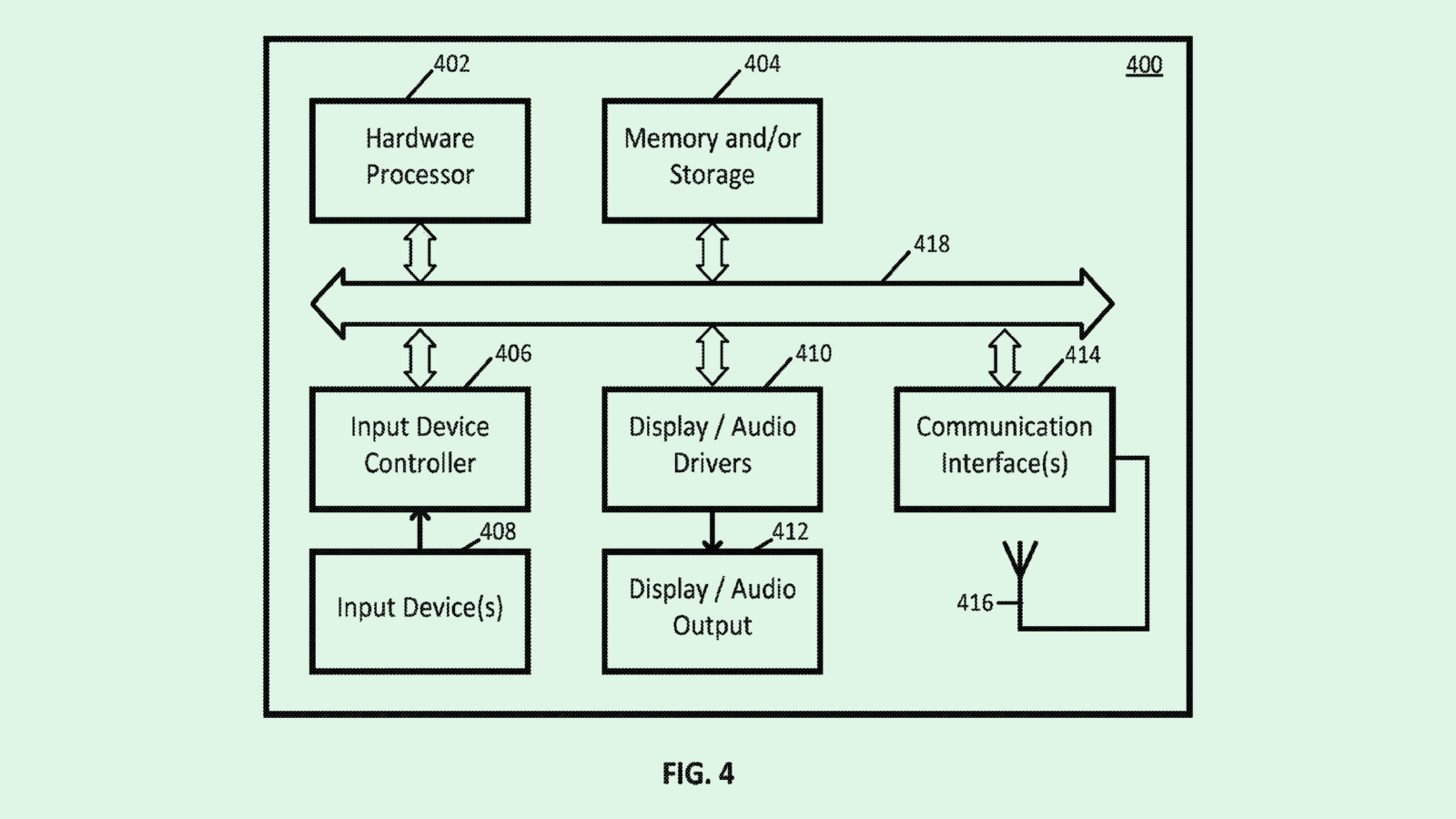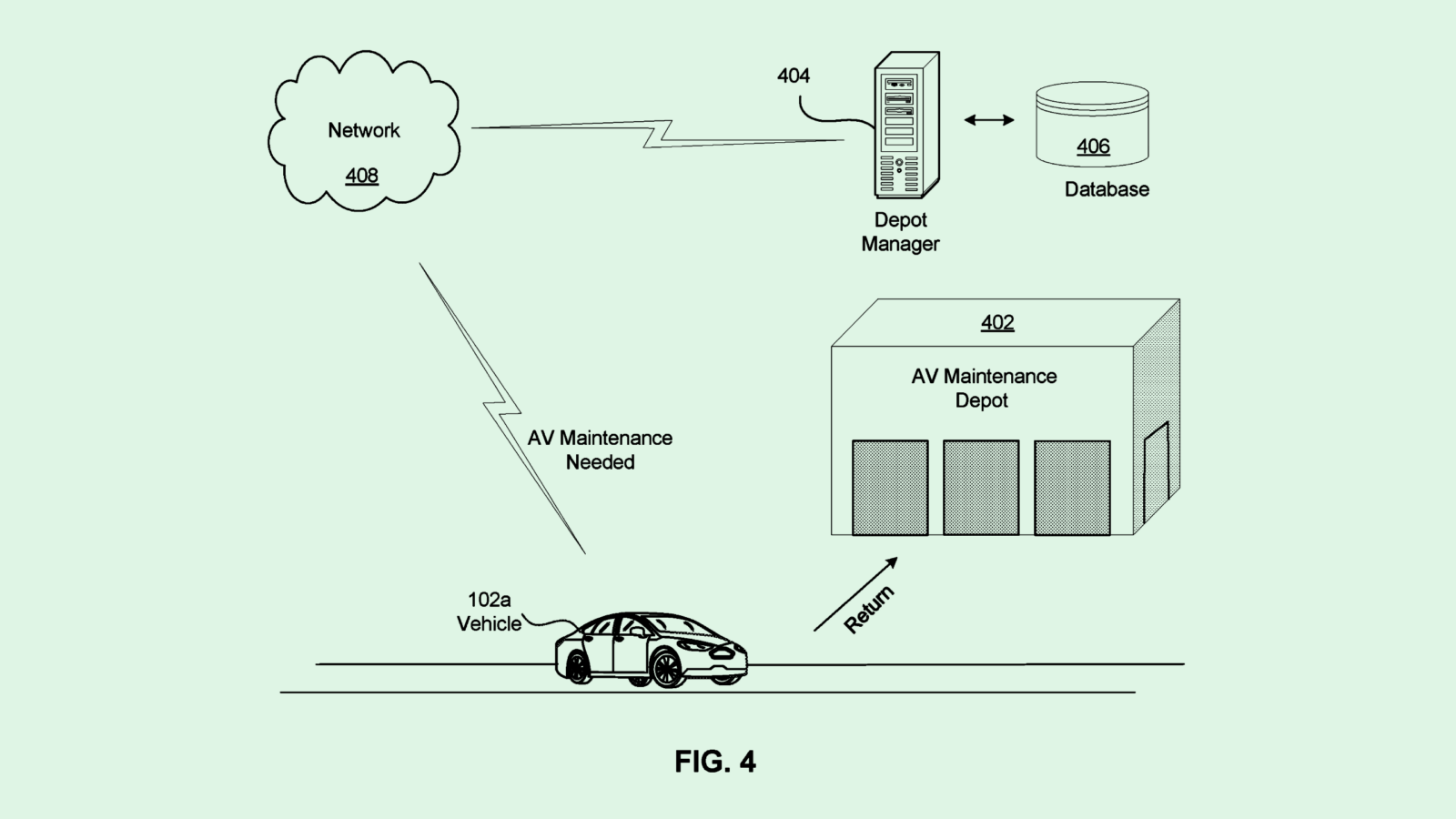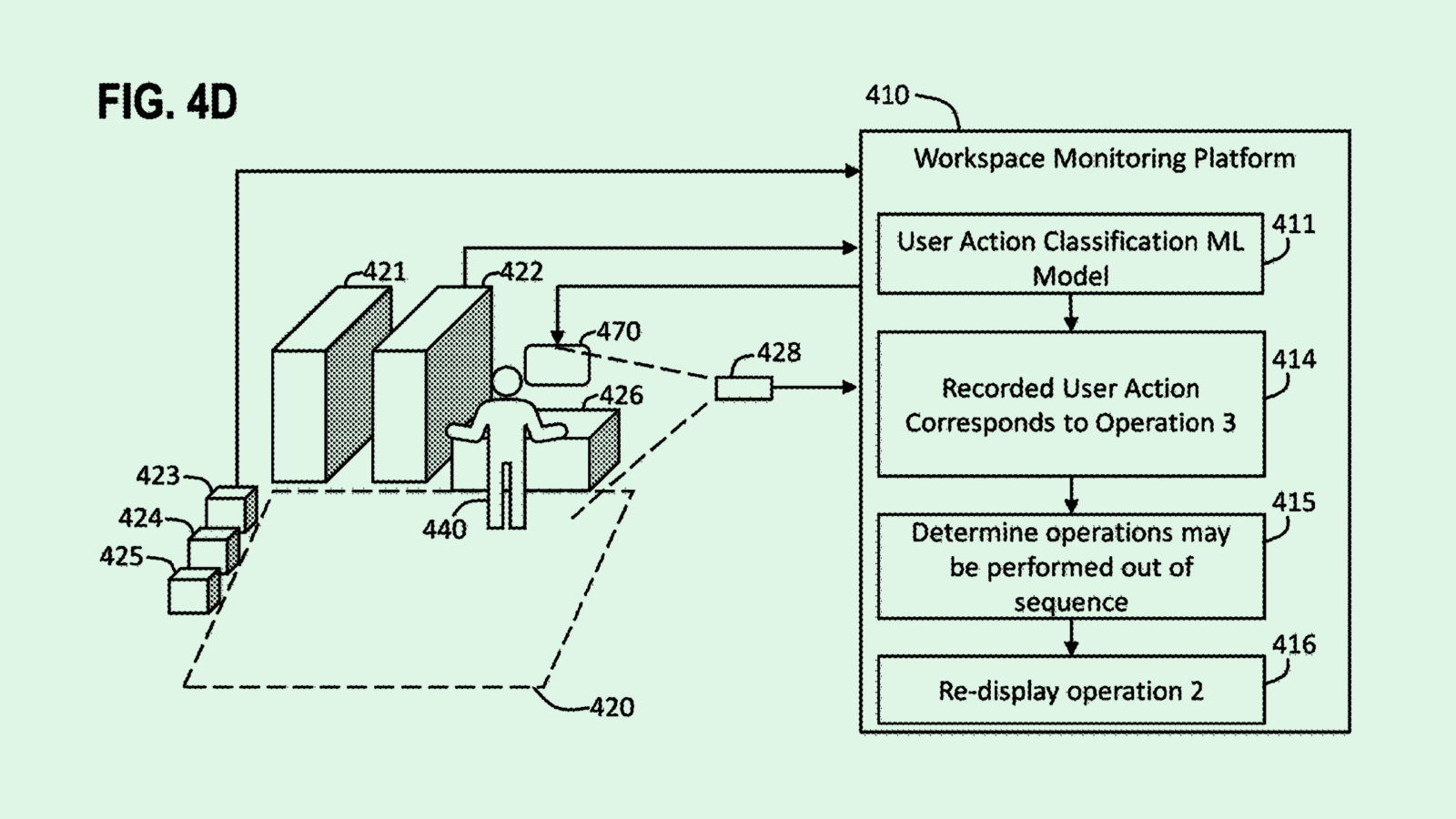Happy Thursday and welcome to Patent Drop!
Today, a video content moderation patent from Google highlights the growing role — and risks — that AI may play in tracking down misinformation and hate speech. Plus: Ford wants to automate self-driving oil changes, and Oracle may want to track worker movements.
Before we jump into today’s patents, a word from our sponsor. Are you a senior leader feeling lonely at the top? Introducing Sidebar, an exclusive, highly curated leadership program designed to propel you to new professional heights. Picture yourself getting matched to a dynamic small group of trusted peers, including Fortune 500 leaders and groundbreaking start-up CEOs, all offering their unique insights and expertise to fuel your journey. Request to join Sidebar today.
Let’s get into it.
Google’s ‘Objectionable’ Corrector
Google wants to make sure that, between video essays and podcast clips, bad content isn’t leaking into your playlists.
The company is seeking to patent a system for identifying “videos containing objectionable content” uploaded to a social media or video-sharing service — in this case, probably YouTube. Google’s tech scans uploaded videos to decide which are “objectionable.”
“It can be difficult for a video sharing service or a social media service to detect an uploaded video that includes objectionable content and it can be difficult to detect such objectionable content quickly for potential removal from the service,” Google said in the filing.
Google’s definition of “objectionable” is somewhat wide: It encompasses “violence, pornography, objectionable language, animal abuse, and/or any other type of objectionable content.”
When a video is uploaded, Google’s system uses a neural network to take in its features — such as content or metadata — and create an “embedding.” To put it simply, an embedding is a numerical representation of the video’s features, which is then placed in a “multi-dimensional space,” or a highly complex graph filled with other video embeddings.
To determine if its contents are objectionable, the system compares the location of a video’s embedding within this multi-dimensional space to that of others known to contain objectionable content. The closer a video lands to other videos of that type, the more likely it is to include bad content.
Finally, if the system concludes that the video includes bad content, Google will block it from being shared.

This isn’t the first time we’ve seen filings from Google that aim to mitigate the spread of so-called objectionable content. The company has filed several patent applications for spam, fake news, and abusive content detection, often involving machine learning models as part of this process.
These patents signal that tech firms see AI as a vital piece of the puzzle in tamping down whatever they deem objectionable, whether that be violence, hate speech, or misinformation, said Brian Green, director of technology ethics at the Markkula Center for Applied Ethics at Santa Clara University.
“One of the great things about AI is that it does give people the ability to expand their observation of what’s going on,” said Green. “It’s not possible for human beings to watch all the content that’s uploaded to YouTube.” Stymieing the spread of this kind of content is even more important during election season, when these campaigns tend to be pushed at a higher rate.
Google’s interest in this kind of technology adds up, said Green. Along with easing the burden on content moderators themselves, effective moderating can keep the watchful eyes of regulators and the public at bay. “[Google] recognizes that if they start doing a bad job, that invites more laws, and invites legal regulation,” Green said. “That it damages their reputation.”
But using AI in this manner comes with several risks, he said. In many contexts, AI is prone to amplifying biases and hallucinating information. Google’s own AI tools have experienced this in the last several months: It had to backtrack the rollout of its AI Overview in search and is facing backlash for incorrect historical images created by its Gemini image generator.
When AI is responsible for tracking down and blocking misinformation and hate speech, Green said, this tendency may lead to false positives and negatives. And striking a balance to mitigate either can be tricky. “Very often, false positive and false negative rates or trade-offs, if you minimize one, the other tends to go up. They’ll have to figure out what the balance is.”
Tap Into Collective Intelligence with Sidebar
Sidebar is an exclusive, tech-enabled leadership program for professionals that utilizes high-impact peer groups and expert facilitation to help you level up your career and achieve your vision of success.
Here’s how it works:
- Request to join and get accepted into Sidebar’s exclusive program.
- Get matched with a personalized small group of high-impact individuals (think start-up CEOs and Fortune 500 leaders).
- Connect with your group of peers and an expert facilitator to receive best-in-class advice, fresh perspectives, and raw feedback to catalyze your professional growth.
Nothing will get you further in your career than learning from exceptional peers — it’s a true competitive advantage.
Start building your circle and supercharge your career by requesting an invitation to join Sidebar.
Ford’s AV AutoZone
Ford wants to know when to give its self-driving cars a break.
The automaker filed a patent application for a system to “ingest and deploy maintenance services for autonomous vehicles.” To put it simply, Ford’s patent describes a comprehensive system to make sure that a fleet of self-driving vehicles receives repairs at regular intervals.
“Current driver-based systems fail to provide a platform to complete these maintenance items or repairs for AVs,” Ford said in the filing. “For example, a user cannot effectively direct or monitor each step of an AV maintenance cycle.”
Ford’s system performs remote troubleshooting on a fleet of autonomous vehicles to identify when work may need to be done on any particular vehicle. If it discovers a car in need of repair, it’ll instruct that vehicle to drive itself to a maintenance facility for an assessment.
After the vehicle gets a check-up, the system generates a maintenance schedule and allocates the proper resources, such as personnel and tools, to the appropriate tasks, adjusting the schedule based on the availability of these resources. The vehicles navigate themselves between different stations and tasks based on the schedule, and are tested before they’re put back into the fleet.
On the user end — meaning, the person who owns the autonomous vehicle or the entire fleet — this process is managed through an app that lays out the entire maintenance schedule, essentially automating the need to bring your car into the shop when the check engine light comes on.

Though it’s not as loud about its commitment to self-driving cars as others, Ford has made progress in its autonomous ambitions. CEO Jim Farley said in an interview with Bloomberg TV last month that the automaker has achieved Level 3 autonomous driving in testing, or a partial kind of automation in which drivers can go “hands and eyes off the road on the highway.”
“We’re getting really close,” Farley told Bloomberg. “We can do it now pretty regularly with a prototype, but doing it in a cost-effective way is just the progress we’re going to need to make.”
While tech firms and automakers alike have committed time and money into exploring self-driving vehicles, these two camps may be approaching it from different angles, said Bob Bilbruck, CEO of consulting firm Captjur.
Companies Google, Baidu, and Amazon are taking the robotaxi route, while Ford is working to retrofit personally-owned vehicles with autonomous capabilities. Ford-backed AV startup Argo AI shut down in late 2022, but the automaker established Latitude AI early last year with more than 500 of Argo AI’s former employees. The subsidiary is working on self-driving in personally-owned vehicles. Firms like Tesla and GM, meanwhile, are approaching autonomy in both respects.
These varying approaches are a sign that there may not be one answer to the question of how autonomous vehicles will change the transportation market, said Bilbruck.
“It’s a game-changing pivot, much like we saw in the computer industry when everybody went from desktops to laptops to tablets and phones,” he said. Patents like these indicate that this pivot will likely have a domino effect on all other parts of the automotive industry, upending gas stations, traditional body shops, and more.
What all of these firms have in common, however, are regulatory run-ins, said Bilbruck. The National Highway Traffic Safety Administration opened an investigation into Ford’s autonomous driving tech in April following two crashes that caused three fatalities. Tesla, Amazon-owned Zoox, and Google-owned Waymo have faced similar probes.
Oracle’s Movement Monitor
Oracle wants to track employees to a T.
The company filed a patent application for “task management with image-capture monitoring of user actions.” As the title of this filing implies, Oracle’s tech tracks a person’s actions in real time as they go through manufacturing tasks, course-correcting when needed. Think of it like “Dance Dance Revolution,” but for a factory floor.
To start out, the system displays instructions on a screen so a person can properly complete a task. While the person is performing said task, the system continuously analyzes the video stream, using a machine learning model to identify and track certain actions. The system detects when a person completes certain actions, and transitions the instructions to the next sequence.
When a person performs an action incorrectly, the system will notice and automatically present instructions to correct it, including undoing and redoing certain actions, or reordering certain tasks within a sequence.
Along with watching employee actions down to the letter, Oracle’s tech includes predictive analytics that can determine start or end times for these tasks, as well as anticipate delays. Additionally, it may use image recognition to identify a “particular user in a workspace” and the tasks associated with them, as well as progress on those tasks.

This patent adds to a pile of filings from companies like Intel, Amazon, Nvidia, and more that aim to bring AI into factory floors. However, while several of these focus on mistake avoidance or task management, they also generally involve instructing a robot or autonomous machine, not humans themselves.
As factory floors become more and more automated, there’s an argument to be made that tech like Oracle’s could be helpful for increased safety precautions — aiming to control not just the predictable actions of robotic co-workers, but unpredictable human ones. But, depending on where the line is drawn, these precautions may come at the expense of employee privacy.
We’ve seen plenty of patents in the past that aim to keep a close eye on employees, including Microsoft’s filings for tech to monitor tone in emails and off-the-clock working, and Snap’s patent for emotion detection in the workplace. These patents may signal a growing desire by tech firms to keep a far tighter watch of their workforces.
Employees, however, may not readily embrace this kind of monitoring: A Pew Research Center survey found that respondents more often opposed AI-based tools that monitor things like workplace interactions, productivity, task progress, and movement.
Extra Drops
- Apple wants to know if you remembered your watch. The company filed a patent application for “on-wrist” detection using temperature gradients.
- Disney wants to dim the flashing lights. The entertainment giant filed a patent application for “photosensitivity mitigation” during the display of content.
- IBM wants AI to do its auditing. The company is seeking to patent AI-based “risk assessment and audit generation” of computing systems.
What Else is New?
- Elon Musk claims that Neuralink expects to implant its brain chip technology into a second patient within “the next week or so” despite issues that occurred with the first patient.
- Apple has reached an agreement with EU antitrust regulators to allow access to its tap and go payments technology to rivals.
- Uncover Insider Secrets For Your Phone. Are you an Android user? Then Android Intelligence is about to turbo-charge your productivity. Their free weekly guide brings you three smart tips every Friday, covering topics from apps to new devices. Plus, get three time-saving tips as a special bonus as soon as you sign up. Start mastering your android devices for free.*
* Partner
Patent Drop is written by Nat Rubio-Licht. You can find them on Twitter @natrubio__.
Patent Drop is a publication of The Daily Upside. For any questions or comments, feel free to contact us at patentdrop@thedailyupside.com.

